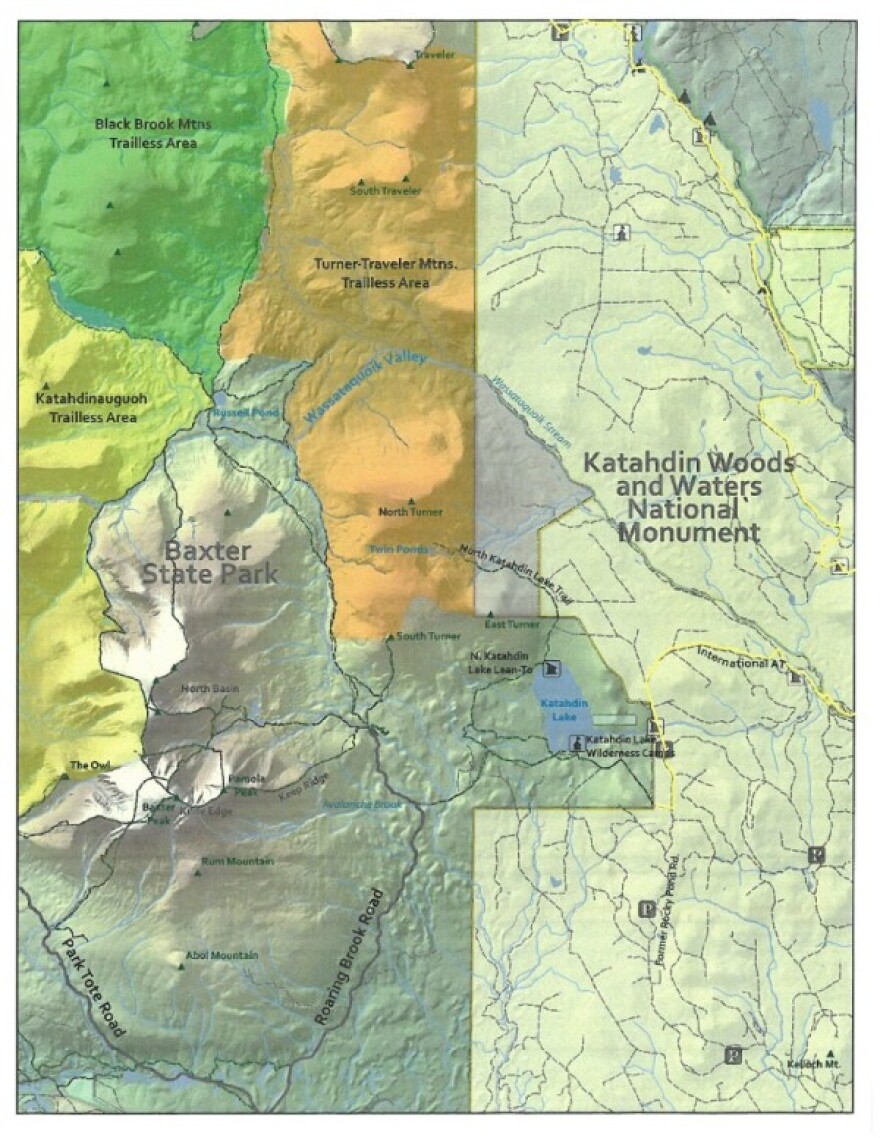Gov. Paul LePage is asking President Donald Trump to reverse the Katahdin Woods and Waters National Monument established by an executive order from President Barack Obama last year.
In a Feb. 14 letter to Trump, the governor calls the monument’s designation “a grave injustice that has been done to the people of Maine and our forest economy.” But there is no precedent for such an action, and undoing this particular deal would require clearing a series of complicated legal hurdles.
In his letter, LePage asks that the monument land be returned to private ownership “before economic damage occurs and traditional recreational pursuits diminish.” But the fact is that the region’s largest employers, two paper mills in Millinocket and East Millinocket, closed long before the monument was ever established.
The Millinocket mill closed in 2008 and the East Millinocket mill has been idle for the past four years. Both snowmobiling and hunting are allowed on a portion of the land, and now that the monument is on the national map, Lucas St. Clair says good things are happening in surrounding communities that have been used to getting bad economic news for so long.
“People are now working together for the first time in years, and the momentum is so, so positive,” he says. “That’s really what my focus is and why I’m not really that concerned about something like this.”

In recent years St. Clair has been the leading spokesperson for the monument, which has recently spurred a $5 million plan for an outdoor education school and which some business owners say has generated an increase in activity as more visitors come to see it.
As the son of landowner and philanthropist Roxanne Quimby, St. Clair is familiar with the details of the complicated land transfers that were needed to turn over nearly 90,000 acres of the family’s land to the federal government. What also made the deal unique is a $40 million endowment the Quimby family gave to the National Park Service for the project.
“If the National Park goes away, the endowment is not going to be there either. And all of the contracts that we entered into to make this land transfer happen, you know, that would be contractual law that could potentially be violated by trying to undo this,” he says.
In addition, there is no power to revoke a national monument under the 1906 Antiquities Act under which it was created. Some legal analysts have suggested that it could only be done by an act of Congress.
Speaking on Maine Public Radio’s Maine Calling program Wednesday, Republican U.S. Sen. Susan Collins of Maine said she did not agree with the unilateral action taken by Obama to establish the monument, especially given the opposition from the Maine Legislature and from several towns in the Katahdin region. But she also said she doesn’t think that Trump can or should try to reverse that executive order.
“There is a real legal question about whether a subsequent president can ‘undo’ the designation. And at this point I also think that many of the towns that are being affected have started to work together to make the best of this situation,” she said.
Collins said even former opponents of the monument have indicated that they’re now willing to move forward with its development.
In his letter, LePage suggests that if the monument can’t be undone that it be managed by the state of Maine, but even that step is likely to raise many of the same legal challenges.




